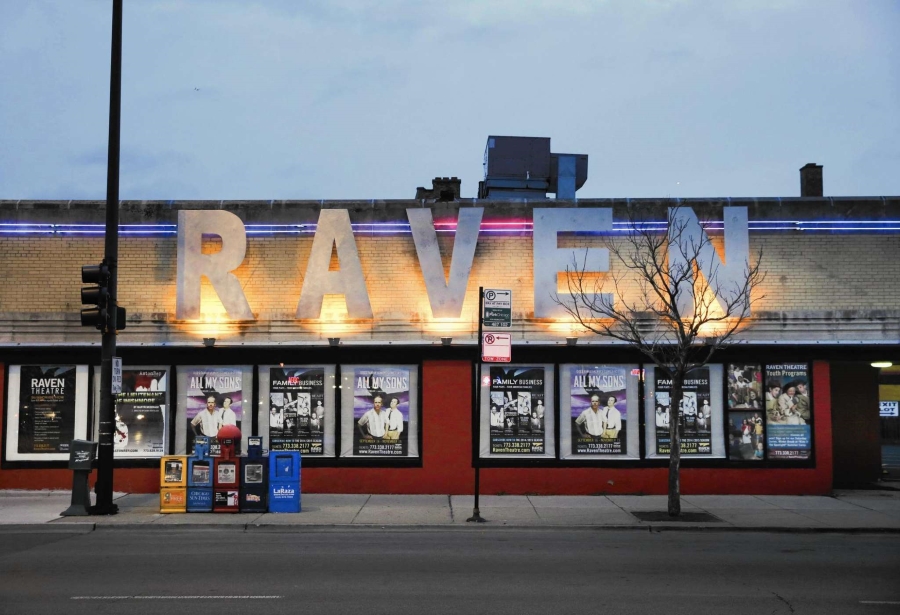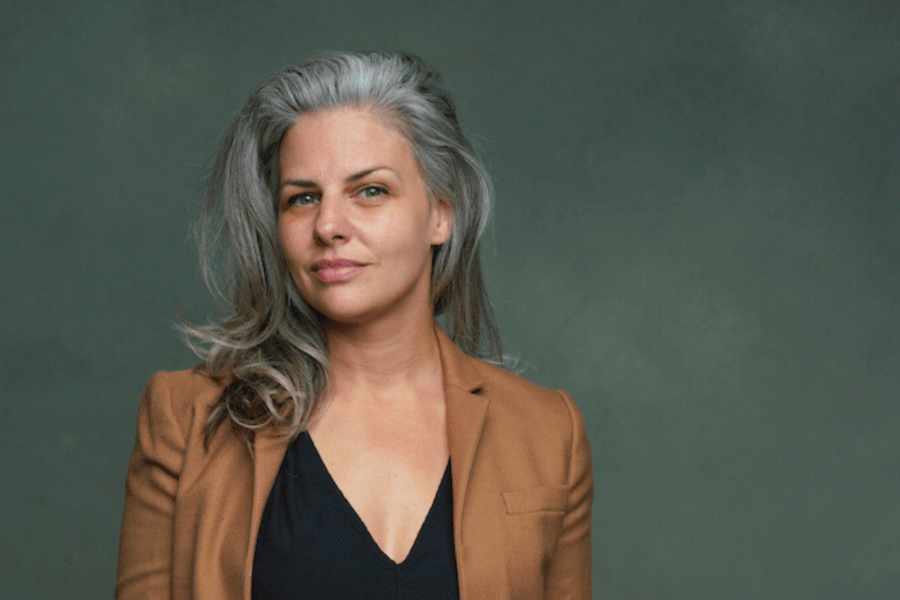“I’ve always had that in me—that strange curiosity about how it all works,” said Adrianna Desier Durantt, the newly appointed managing director of Chicago’s Raven Theatre Company.
Traces of that curiosity are scattered throughout Durantt’s varied history with the arts. Coming from a family that includes a jazz drummer and a Beat poet, Durantt grew up in New York City surrounded by music, art, and “the natural practice of observation, critical thinking, and inspiration,” as she put it. She dabbled around the theatre field, trying her hand as a pit musician (which she credits for her interest in musicals), as well as taking opportunities to try stage management and design. She eventually attended Ithaca College, where she received her BFA in theatrical production, and then studied stage design at NYU Tisch’s Design for Stage and Film MFA Program.
The more Durantt studied, the more she found herself drawn to learn even more aspects of the theatre world, including arts management and producing. She fed her curiosity with the ins and outs of budgets, contracts, the whys and hows of theatre spending, and how that spending reflects a company’s values. While at NYU, Durantt also studied innovation and entrepreneurship, an experience Durantt said blew her mind. Perhaps this was a hint at how her career would take her creative and business skills far beyond the theatre world before finally bringing her back home.
“It’s the same muscle, to be honest,” said Durantt. “It’s all curiosity and wanting to serve something bigger than myself.”
Durantt’s career has seen her become the founding partner and producing executive director of PARA.MAR Dance Theatre, a member of the producing team for Hubbard Street Dance Chicago, and a brand and communication strategist for Chicago companies like 2nd Story, CURE Epilepsy, BPI Chicago, as well as Northwestern’s theatre MFA program. It’s a career that also saw her work on campaigns for Teen Vogue, West Elm, Nike, and Pepsi.
“I’ve always been curious about what other industries are doing that the arts can glean,” said Durantt, who also worked with Steppenwolf during its most recent leadership transition and campus expansion. “How can we start talking to each other? Everyone’s so siloed. How can we all have the same conversations, breathe the same air, and connect?”
As she joins Raven’s leadership team alongside artistic director Sarah Slight, Durantt said she wants to be in a place where she can most benefit the growth and success of an organization. In a conversation earlier this month, Durantt talked about joining her neighborhood theatre company, what can be transferred from her experiences in other industries, and what challenges still await her theatre as it prepares for its next chapter of growth. This follows a chapter of recovery: The theatre’s 2021 budget was around $404,000, and last year’s was around $789,000, which is at last closer to its pre-pandemic budget levels. The following conversation has been edited for length and clarity.
JERALD RAYMOND PIERCE: What made joining Raven feel like the right next step for you?
ADRIANNA DESIER DURANTT: I live three blocks away from the Raven, which is amazing. My husband’s a set designer. He teaches at Northwestern. We moved here almost 10 years ago, have only been blocks from the Raven, and have had such curiosity about it. It is such a strong presence in the neighborhood. We’re pretty far north, and they’ve compelled some really amazing directors and new writers to come really far north. I’m like, Well, what’s going on over there? That’s really interesting.
I got to know it as an artist, as an arts lover, as an arts community member, and then just plain old community member with kids who go to school in the neighborhood, with friends who send their kids to the theatre for camps. I was like, I have a feeling that the more I know about this place, the more I may have the ability to help it, especially in a time for the industry that is challenging, how I could be a part of making that theatre a true community space, and by doing that, have a chance to communicate the value and the miracle of theatre and how it changes lives. I’ve had the great fortune and benefit of having my life changed by being in a room with people sharing a story with me.
To be able to be a part of that, of providing a home to that, in partnership with Sarah, who’s amazing and smart and rigorous and thoughtful and caring, and a mom also—when she asked me to consider the position, it seemed like it could be something really special, and I think it will be. There are so many good bones in that theatre and so much good history and good will in the community that people want it to be successful. I feel like it’s a good moment for a new chapter at the theatre.

I’ve spent a number of years in Chicago, living in the Edgewater neighborhood myself, visiting Raven on numerous occasions. Even prior to Sarah’s arrival, it felt like Raven was ready to take the next step. In 2021 the company officially became an Equity theatre. I know you’ve worked with Steppenwolf through its leadership transition and campus expansion, so, as you look at Raven, now in its 40th year, what does this next chapter look like? Are you seeing this as a new period of growth?
I think so, I do. I also think it’s a time to really hunker down and clarify the identity and the new vision in light of all the changes that have taken place, in light of the expectation and excitement from the community, and how to reimagine what community means. Some of the ways we’ve been thinking about it is as an inspired reason to connect, a destination for community, really trying to hone in on investigating the current mission and what is still true from when it was created. What is integral to the theatremaking that happens there? It will always have classic programming, it will always have contemporary programming. How do we make it reflect the values, questions, and aspirations of our time in a way that is inspired? It has two amazing spaces that we hope will have more life in there, whether it’s our own programming, resident companies, rentals. There’s a lot of improvements, I think, to be investigated, with new lighting and a new lobby experience, and a new brand development perhaps.
Honing in on how to refine the mission and the vision for this next chapter is going to be the hard work, and then what it looks like and feels like is going to be hopefully less hard because we know exactly what direction we’re going. It’s a perfect community to test some new ideas and concepts and models and create a space where people want to be.
You’ve spent time working with some big name brands, like Teen Vogue, Nike, and Pepsi. What did you learn from your time working in that sector that may help Raven and its community?
Well, it’s interesting, because my first impulse is to say, actually, they learn more from us. They learn more from artists helping them distill their vision and create an environment for connection. Whether that’s branding, whether that’s an experience, really, it’s about people, community as a part of a market that you are trying to attract. Raven has a built-in community, and I think there’s a lot of opportunity for growth there. But what I did love and do love still about some of these bigger brands and experiential work—it’s fast. It gets to the crux of what is important really fast, because they’re going to spend a lot of money really fast and they can’t afford for it to fail. What I also love about the theatre is how much time it takes to tease out the dramaturgy of, “Oh, but what does that one word mean?”
But I think they’re very similar muscles, I really do. If you know what your offering is, what your statement of purpose is, then you know the scope of work necessary to produce it. I wish the theatre had as much money as some of these bigger brands. We’re trying to get there. But I think that that communication of value, which requires funding, which requires real talent to be a part of communicating the value of the offering, of live performance, a somewhat intangible thing—I think as soon as we’re able to figure that out, it’ll just be gangbusters, as they say.
Is there a secret to bringing these large brands, large companies on board to sponsor or work with theatres, to help bridge that monetary gap between what these large companies can afford and what theatres can afford?
I don’t know that it’s a secret, and I don’t know that I know. What I would recommend, and what I do from a producing standpoint, is try to find the common ground—try to find what it is that we have to offer that they would benefit from. When I was at Hubbard Street, there was a street team at the Lincoln Park Zoo for KIND Bars. I was like, “Who’s your marketing field team lead?” and wanted to try to connect with them. Then I was able to tell the story of, “Hey, we have summer camps at Hubbard Street for six weeks at a time, and these kids are hungry. Do you have any extra product on hand that you’d be willing to donate?” That becomes an in-kind contribution. But then you see the brand of KIND Bars, and if you are a donor who is married to someone who’s also in consumer goods, you may be like, “Oh, they are aligned with this company; that communicates to me an extension of their values, and maybe we could be helpful in some way.” The more trust that’s created around these brands leaning into your work, even though it’s an artistic, intangible thing—that trust starts to help other people want to be involved, compel them to be more involved.
We’re all people; we just happen to have chosen different paths that come from different experiences. If you could share the offering in a way that communicates value—as opposed to, “You get this for that, I get this for this,” creating an experience around it—I think that could be a decent way to think about that kind of strategy. It’s really connecting.
What’s the biggest challenge you see still facing theatres?
Certainly funding is challenging. There’s a lot that is not as predictable as it used to be: where funding priorities are, how subscriber models work, how behaviors are changing. That’s a standalone problem, but it can be influenced by what I identify as the bigger challenge: the communication of the value of an intangible art form in a way that doesn’t just feed itself, but that feeds people outside the theatre community. Once we’re able to thread that needle, we’ll be able to more effectively compel people to pay for the offering or to invest in the offering. That’s how I think about it.
It’s like, “Oh, I know this thing can be so cool. I know that you will think it’s so cool. How can we connect? How can I convince you?” It’s just a matter of creating a community willing to take the risk of it being bad, frankly, but maybe changing your life. Hopefully, it sways more on the side of consistent life-changing experiences, but you’ve got to build in that risk tolerance.
Jerald Raymond Pierce (he/him) is the Chicago Editor for American Theatre. jpierce@tcg.org


